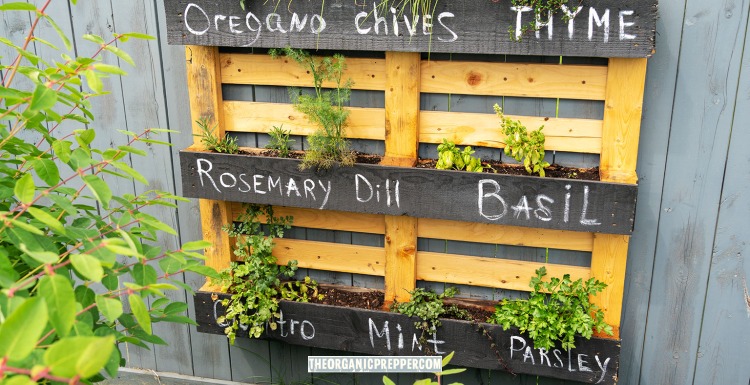With many options for inexpensive small space gardening out there, attempts to grow food in an urban environment can be successful . With the possibility of famine looming due to the pandemic, fuel pipeline and meat processing plant hacks and drought, now is the time to seriously consider becoming a producer.
A big problem in urban agriculture is space, specifically horizontal space
House lots in the city tend to be small, and apartments & condos smaller still. Even houses in the suburbs don’t typically have forty acres of land to grow on or even a ten-acre hobby farm-type space.
My lot, for example, is 59 ft2, and my house sits on that. I estimate my yard space to be 1/4 of my lot size, not including setbacks. Since one person needs 4000 feet of garden space to grow enough vegetables for one year, there isn’t enough space on the average urban lot for traditional row gardening.
So what is the solution?

Grow vertical! Since we don’t have the space to grow Out, grow Up
Adding trellises to your garden is an excellent option for small space gardening. And, it will increase your growing space exponentially!
Moreover, just about everything benefits from support; tomatoes, peppers, and everything that vines. Cucurbits such as cucumbers, melons, and pumpkins can vine to 6 feet or more. Tomatoes and beans will grow as tall as the space they have, especially pole beans.
By trellising, you give your plants the vertical space to grow and produce. Benefits of trellising include:
- Increased airflow, which cuts down on disease
- Keeps fruits off of the ground
- Easier to pick produce
- Easier to prune and harvest
- More plants will fit into the smaller space
- Increased exposure to sunlight
There are many kinds of trellises, made from a wide variety of materials. Forms vary from a simple string to teepees to A-frames and cattle panel. And all can be adapted to tight urban spaces.
String
Whether you use hemp twine, jute, or something else, string is cheap and easy to use for small space gardening. I run some string over my rain gutters and into my containers, and my plants love them. String might be a good option for apartment and condo dwellers who have a lanai or small porch. Always keep the weight of the vines plus the vegetables in mind, because too heavy can bring down a rain gutter. I use string for smaller things, such as beans and peas.
Chicken wire, aka poultry netting
This is a wonderful item to have around the homestead! It might even be one of the things that hold the universe together, along with duct tape. This is more of a raised bed solution; I stapled some 3’ wire to the side of my wooden garage in 2012 and staked it to the ground in a lean-to fashion. It’s still there, stable and solid. This trellis can support heavier items, such as cucumbers, squash, and melons.
Teepee Trellis
This style can be made from various materials, anything from wood to inverted tomato cages. A small one might fit on a porch or lanai. The shape is exactly as named: triangular, like a teepee. Depending upon how wide the base is, this trellis might support some heavier items, but I tend to use it for beans and peas.
Pergolas, arches, and wall hangings
These are great if you have some room! Pergolas and arches allow the vines to grow up and over. They’re great on small urban lots as path decorations and can support a wide variety of vegetables. Wall hangings help turn walls into garden space. And they can be made from a wide variety of materials or easily purchased at any hardware store.
A-/T-frames
Just like they sound: a trellis formed into a T or A shape. These take advantage of the strength of the triangle to give support to the heavier plants, such as tomatoes, cucumbers, and melons. T-frames especially can be very large and support a roof which can also provide growing space. Typical materials are wood and metal. You can use chicken wire and old pallets to make A-frames.
Chain link fences
Good fences make good neighbors. Right? I also have my deck fenced in with chicken wire to keep my cats from prowling. A good chain link fence can support an edible hedge, such as blackberry or raspberry. I use the thorny varieties for my hedges. My chicken wire fence supports a wide variety of vines. It also helps hold stakes in my containers for staking squash and cucumbers. And yes, you can tie string to it for small vining things to grow on.
Cattle panel
A metal lattice-style structure that, in some cases, can be modular. I use a product called a VineSpine, which can be linked together to form lines or arches. Mine wasn’t cheap, but it’s been a very worthwhile investment. *See lessons in gardening below.
Pallets and window boxes
Fill the pallets with soil, lean them against a wall, fill with greens and herbs, or anything with shallow roots. They also make decent A-frames. Vegetables with shallow roots or flowers to attract pollinators grow well in window boxes.
In the article, Kara shares some of her Mom’s tips for gardening when you “can’t.” Some of her creative ideas could be adjusted to use as small space garden options.
Lessons In Gardening: the Contraption
During my early years in gardening, I realized that those cheap tomato cages really aren’t the best support for tomatoes. Something stronger, more sturdy, and stable is what I needed. Using the internet, I researched several possibilities to the point of severe sticker shock. So, I decided to make something suitable much more cheaply.
I went to the hardware store and came back with some wood for crossbars and plastic supports, all about as big around as my thumb. I joined my pieces together and strung some twine for the tomatoes to grow up.
Back to the hardware store!
Surely I’d given enough consideration to weight. I had not.
A few months later, the wooden crossbars were bending down from the weight to the point of forming a huge U. The structure reminded me of a swayback horse, and I knew it would break if I didn’t take action.
This time I brought back some good 2×6 to insert for support. The Contraption did get me through the season, surprisingly enough! The following year I coughed up quietly for a much better option, one I’ve been using ever since. Garden and learn.
Here are a few books to help you in your small space gardening adventures:
Vertical Gardening by Dane Alexander
Container Gardening for Beginners by Tammy Wylie
Small Space Vegetable Gardens Andrew Bellamy

Small space gardening requires some skills and a little imagination
Trellises can help the urban gardener increase growing space exponentially by use of the vertical plane. There are a wide variety of styles and materials, limited only by your skills and imagination. Good luck and happy gardening!
Do you garden in a small space? Do you have any tips and tricks to add here? Let’s talk about it in the comments.
source ; Jayne rising



